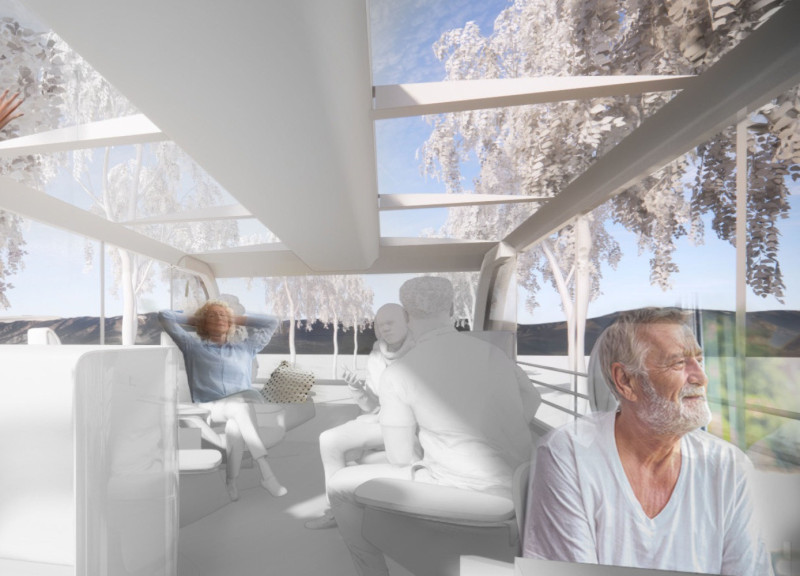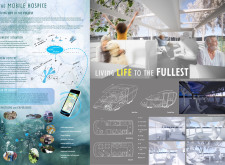5 key facts about this project
The architectural design emphasizes a versatile layout that accommodates both indoor and outdoor experiences. The incorporation of a retractable roof enables interaction with the natural environment, promoting a therapeutic connection to nature that is often absent in traditional facilities. The project is equipped with adaptable spaces that facilitate communal interactions while maintaining privacy and comfort for individuals and their families.
Unique Design Approaches and Features
One of the key distinctive features of the Mobile Hospice is its flexible spatial configurations. The design includes areas that can transform based on needs, allowing for various activities such as social gatherings, individual reflection, or family time. By integrating open-air lounges alongside enclosed spaces, the design fosters engagement with nature while providing a secure environment for care.
Another significant aspect is the integration of technology to enhance personal care. The designed mobile care unit allows for personalized experiences through a digital interface, providing options for customization based on the patient's preferences. This approach encourages active involvement in care decisions, a crucial aspect of enhancing psychological well-being.
Integration of Materiality and Functionality
The project employs a careful selection of materials, focusing on sustainability and comfort. Lightweight metals provide structural integrity, while sustainable timber offers warmth and a natural ambiance. Glass elements ensure an abundance of natural light while creating a sense of openness. These choices are made with the intention of creating an inviting atmosphere that is reflective of the project's core principles.
Furthermore, the architectural design includes specialized furniture, such as ergonomic lounge chairs, designed to support comfort and accessibility for patients with varying mobility levels. The overall layout encompasses functional areas, including a nurse station, kitchenette, and restrooms, ensuring that all necessary elements for care and interaction are available within the mobile unit.
The Mobile Hospice project represents a shift in how architecture can influence the experience of end-of-life care. By prioritizing mobility, emotional engagement, and personal choice, it sets a precedent for a new model of palliative care. Readers are encouraged to explore the project presentation for detailed insights into architectural plans, architectural sections, and architectural designs that highlight this innovative approach to hospice care.























